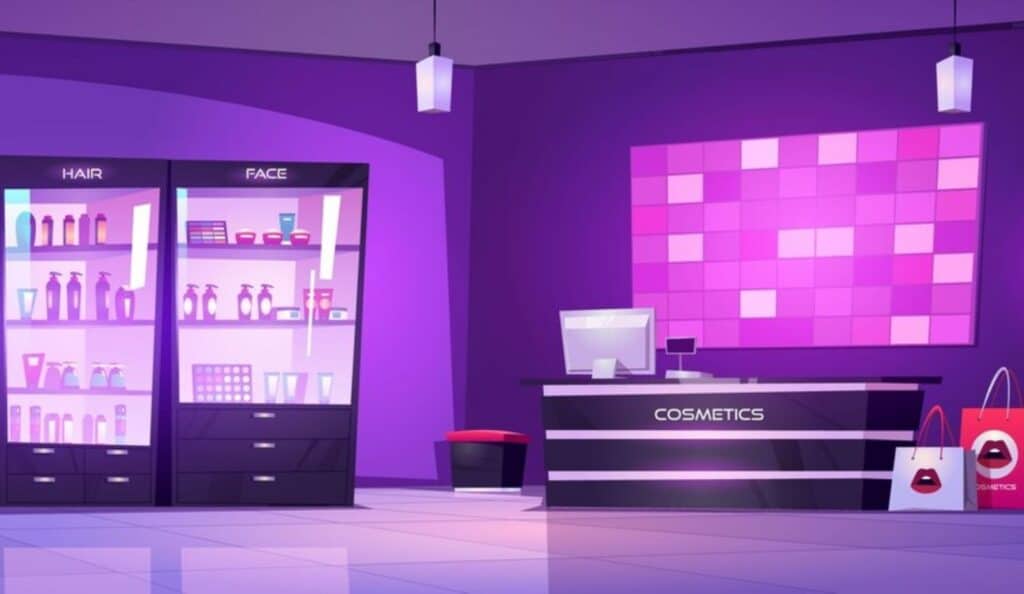
The Role of Experiential Marketing in Todays Retail Store Design
Experiential marketing is transforming the way stores engage with customers by making everyday shopping enjoyable and memorable experiences. Rather than solely concentrating on products, this strategy builds unique environments that connect with customers emotionally, making them feel loyal and content with brands.
Through the utilization of such things as stories, technology, and innovative designs, stores can become places of interest that leave a lasting impression. In the current competitive marketplace, experiential marketing is a significant means of standing out and thriving.
What is Experiential Retail?
Experiential retail places emphasis on generating immersive and interactive shopping experiences rather than merely selling products. Technology, customized services, and engaging elements are leveraged to introduce dynamism in the shopping process and make it enjoyable.
Moreover, event, workshop, or activity forms are frequently provided by retailers that prompt customers to engage with merchandise in innovative forms. This results in the generation of emotional links, increased satisfaction among customers, and brand reinforcement.
What are the Key Elements of Experiential Retail?
Experiential retail is about making memorable shopping experiences. This is achieved by having –
- Attractive stores that leverage technology and fresh designs.
- Experiential retail makes shopping personalized through the use of data for personalized recommendations.
- Customers can engage in activities, workshops, and demonstrations that bring them closer to products and brands.
- Stores implement advanced technologies such as augmented reality (AR), virtual reality (VR), touchscreens, and mobile apps for interactive experiences.
- It integrates online and physical store shopping seamlessly and narrates stories to bridge customers with the values and products of the brand.
- Its aim is to enhance customer satisfaction, establish loyalty, and make lasting memories.
What Are the Benefits of Experiential Retail?

Improved Customer Interaction Leading to Brand Loyalty
Experiential retail turns shopping into a fun experience and an interactive event, keeping customers longer and building relationships with the brand. Shopping becomes enjoyable due to things such as interactive screens, virtual reality, and testing products, resulting in better relationships and sales.
Moreover, unique and memorable experiences enable stores to create emotional connections with customers, resulting in long-term loyalty. Personalized services and tailored experiences make customers feel valued and understood, leading them to return and recommend the brand.
Differentiation and Increasing in Sales
Experiential retail enables brands to differentiate themselves by providing distinct retail experiences. Innovative store designs, theming zones, and events generate a compelling brand identity, which draws in new shoppers and retains existing ones.
Subsequently, engaging, interactive shopping experiences prompt customers to make unplanned purchases. Interactive point-of-purchase displays and product demonstrations reveal benefits, driving customers to purchase unplanned products.
Positive Word-Of-Mouth Recommendations
Wonderful experiences encourage pleasant customers to talk to friends, family, and friends of friends on social networks, and through sharing happenings and exhibiting assists in selling the brand via positive recommendations.
Knowing The Customers Along with Stronger Community Bonds
Participative elements and tailor-made services aid shops in understanding valuable facts regarding what is loved by the customer. It enables useful feedback and enhances marketing and products, providing improved service and customer satisfaction.
Moreover, workshops and events build a feeling of belonging among customers, connecting them to the brand and one another. Community-based activities enhance the image and loyalty of the brand and turn stores into meeting places.
Flexibility
Experiential retail is able to adapt to changing styles and consumer tastes through the introduction of new themes, offerings, and technologies, keeping stores active and interesting to consumers.
Role of Experiential Marketing in Today’s Retail Store Design

Experiential retail is an emerging trend that is centered on developing exciting and interactive store environments in order to better engage with consumers, shifting away from the traditional role of retail as mere transaction sites; while digital shopping is increasingly convenient, fashion houses and retailers are crafting immersive, visually stimulating stores to draw consumers away from digital sites and into physical locations.
Retail Design Undergoing Tremendous Change
Retail design has undergone tremendous change, evolving from basic functional spaces to exciting and engaging places. Previously, stores were simply used as transactional places for buying and selling, but nowadays they are constructed to offer entertaining and memorable experiences, quite like entertainment centers. This is due to the fact that customers today no longer require mere products. They desire experiences that are personal and meaningful. Retailers are also under severe competition, so they are attempting to be different by providing something unique that will make shopping more enjoyable and distinctive than it has ever been. This emphasis on experiences assists in attracting and retaining people in an environment where there are numerous other options to shop both online and offline.
Omnichannel Retail
Omnichannel retail involves the creation of seamless shopping experiences online as well as offline, providing great ways to shop for all. For example, a famous makeup brand Estée Lauder introduced a voice-activated makeup assistant to simplify make-up application and make it more convenient. Some other trends are in-app maps for convenient navigation, haptic feedback for immersive product interaction, and store layouts with wider pathways and sensory spaces. It is also being enhanced with features such as audio description and AR functionality to enhance the shopping experience for all customers.
Technology Playing a Key Role
Technology also has a key role in making shopping more engaging through means such as augmented reality, interactive screens, and intelligent systems that produce thrilling ways to shop; for instance, virtual fitting rooms enable you to try on clothing virtually, and interactive screens deliver real-time information and recommendations about products, making shopping a more entertaining and new experience that seems to be straight out of the future.
Inclusive Design
Inclusive design is a significant aspect of experiential retail, ensuring that stores and products are accessible to more people. It inspires brands to innovate in response to customer feedback and design features that benefit everyone. Examples of inclusive design are pop-up shops that also serve as community spaces, interactive features such as voice commands or gesture recognition, and product customization features that are available to all customers.
Accessibility
Accessibility is important in retail because it affects customer satisfaction and loyalty. In the United States, nearly 26% of adults, or more than 60 million people, have disabilities that make it hard to shop. People with disabilities wield almost $13 trillion in worldwide disposable income, but physical store and digital space barriers often discourage them from shopping. By opening up retail spaces to everyone, companies can make all customers feel welcome, enhance shopping experiences, and achieve long-term success.
Sensory and Delivering Memorable and Engaging Journey
An immersive shopping experience engages all the senses to deliver a memorable and engaging journey that grabs customers’ attention the moment they step into the store, transforming an ordinary shopping visit into a special experience. Through the use of features such as mood lighting, calming sounds, and touchable surfaces, shops can establish a multisensory environment that fosters emotional connections and makes customers feel good about the brand.
Moreover, this interactive setup enables shoppers to participate in activities and experience special things rather than simply viewing products, making their visit more enjoyable and meaningful; these little details can significantly enhance the shopping experience, converting casual visitors into loyal customers who value the store’s unique and welcoming environment.
Future Of Experiential Retail
The future of experiential retail will see thrilling transformations as retailers work to keep pace with increasing consumer expectations driven by advances in technology and changing lifestyle patterns, emphasizing the delivery of highly personalized experiences attuned to personal tastes, bringing together digital and physical aspects of shopping to offer a seamless and interactive experience, and meeting sustainability issues by embracing green practices and store designs that demonstrate a focus on environmental stewardship, keeping them relevant and attractive in an increasingly competitive and dynamic marketplace.
Conclusion
Experiential retail is not just a passing trend; it is changing how brands connect with customers today. It turns regular shopping into fun and engaging experiences, making stores more memorable and focused on customers. By using technology, personalized service, friendly design, and community events, experiential retail builds brand loyalty, makes customers happier, and boosts store visits and sales.
As more people shop online, the success of physical stores will depend on how well they can offer these exciting and welcoming experiences. By focusing on new ideas regarding retail, personal touches, and emotional connections, experiential retail helps brands stand out and build strong relationships with shoppers. In the future, retail will be about creating spaces that do more than sell products; they will share stories, stir emotions, and create lasting memories.
